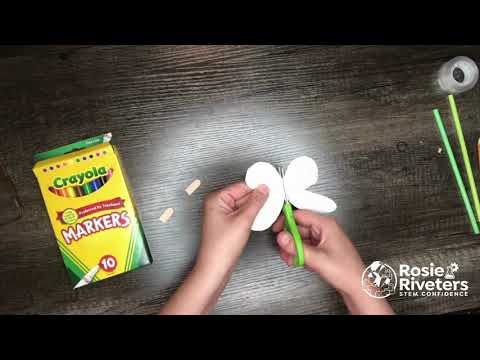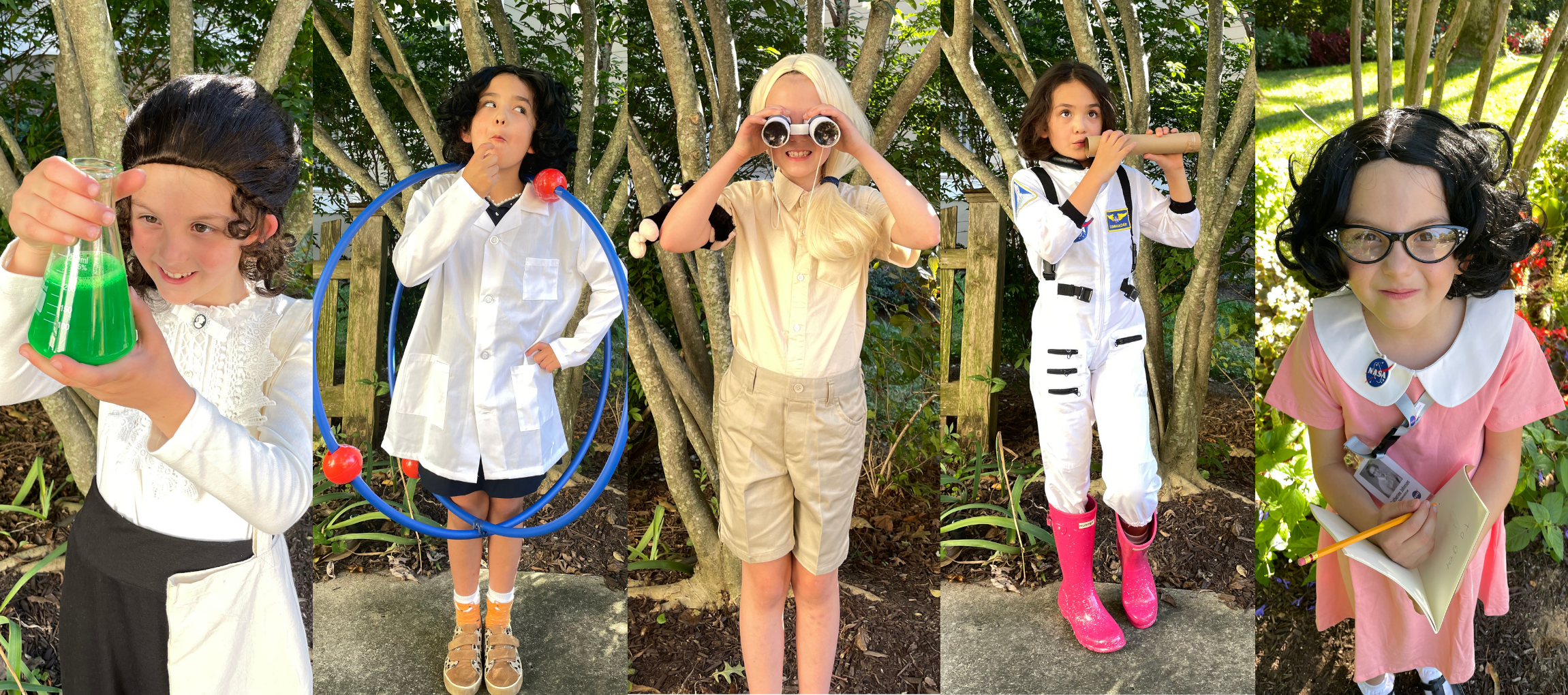In this Rosie Labs guide you will find:
- Productive struggle opportunities for students during their project build,
- Lesson objectives and concept overview,
- Optional STEM topic video to share with participants,
- Step-by-step instructions and video of the Rosie Riveters’ Static Electric Dancers Project,
- Optional STEM activities to further explore the objectives and concepts used in the project build.
Objective
Provide students with a basic understanding of atoms and how their particles interact with each other to create electricity.
Concept Overview and Experiment Inspiration
Have you ever gotten a “shock” while walking or running in your socks or watched someone’s hair fly up in the air when it’s rubbed against a balloon? If you have, you’ve seen, or felt, static electricity in action!
Absolutely everything in the whole wide world is made up of atoms. Atoms are made up of three types of particles called protons, neutrons and electrons. Each particle carries what is called a charge. Protons are positive (+), and electrons are negative (-). The really cool thing about these particles is that when they interact with each other they do some interesting things. Similar to the poles of a magnet, like particles (+, + or -, -) repel each other (push away) and opposite particles (+, -) attract each other (come together).
If you look closely at the atom diagram below, you’ll notice that the number of protons and electrons is equal. This is because their positive (+) and negative (-) charges attract each other, which helps to stabilize (balance) the atom. When just one particle is out of balance things start to get really interesting. Some may even say ELECTRIFYING!

When your socks rub against a carpet or a balloon rubs against a head of hair, some of the electrons in an atom to break away to create an imbalance. So when there is an imbalance of protons and electrons between your sock and your skin, you will feel a little shock! For the head of hair, the same charges cause hair to stand up straight and repel away from each other.
This powerful phenomenon that happens in the imbalance between protons and electrons can also be used to make tissue paper dance and fly! Use the instructions below to make a Static Electric Dancer!
Science Goals
- Atoms are the building blocks of all matter
- Atoms contain particles that have positive, negative or neutral electrical charges
- Static Electricity is the transfer of an electron from a negatively charged object to a positively charged object in an electric field.
Vocabulary
Atoms – tiny particles that are the building blocks of all matter. Atoms are made up of particles with electric charges called electrons, protons and neutrons
Static Electricity– the build-up of an electric charge on the surface of an objects that is the result of an imbalance between electric charges in atoms.
Proton – a particle with a positive charge (+)
Electron – a particle with a negative charge (-)




